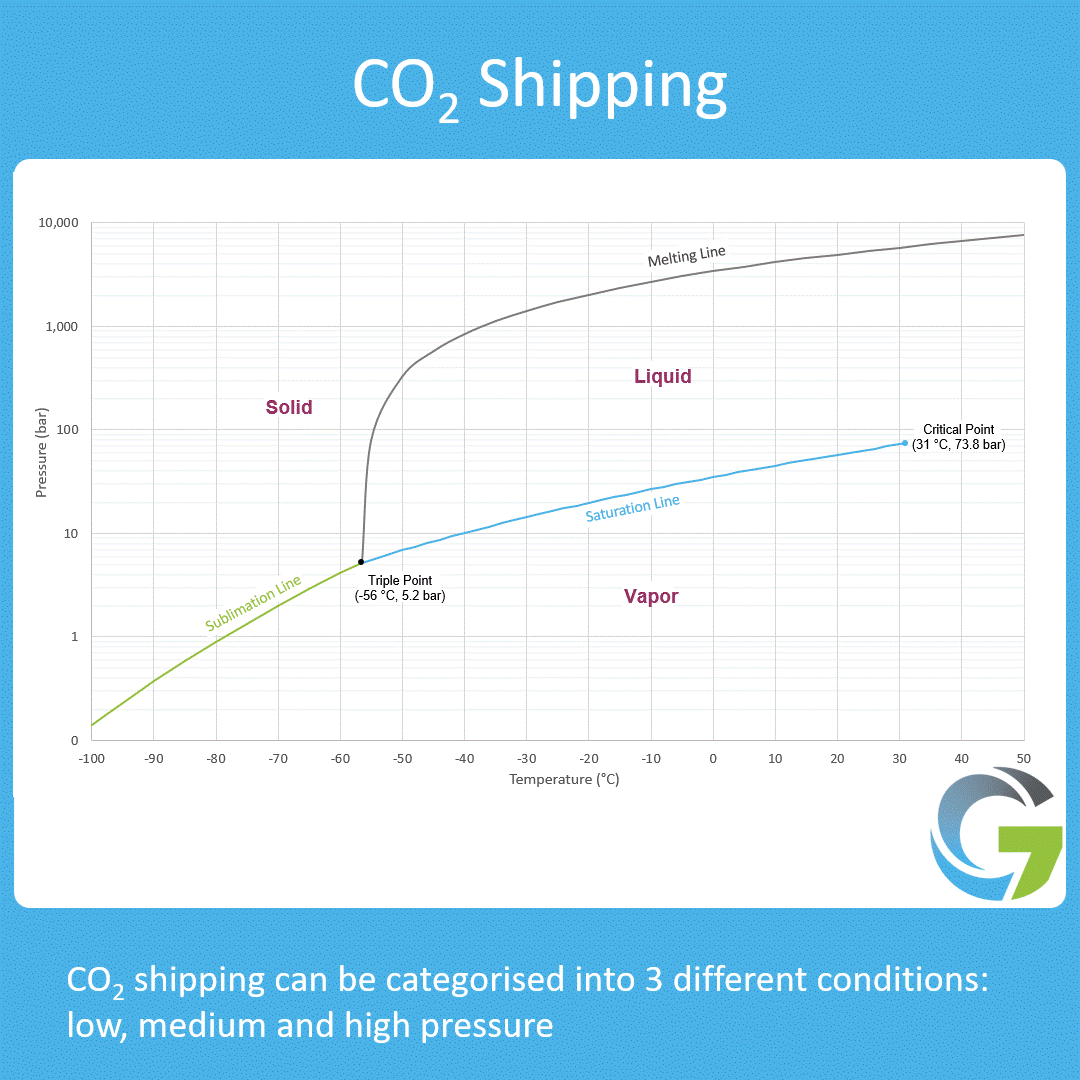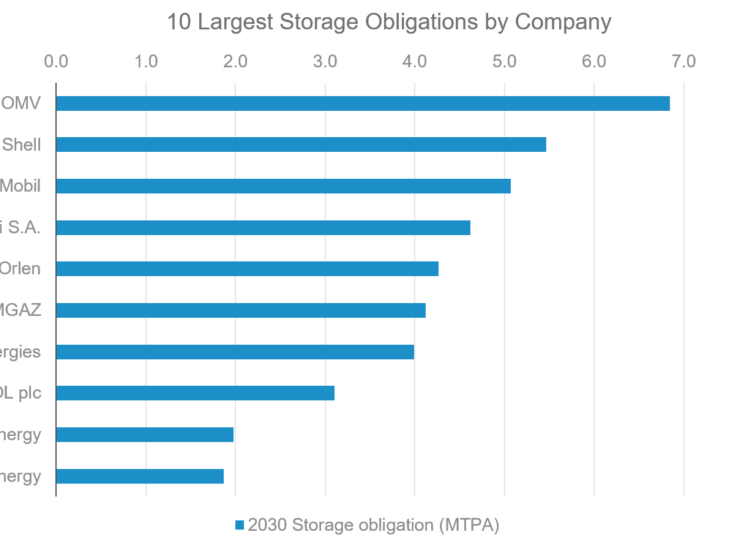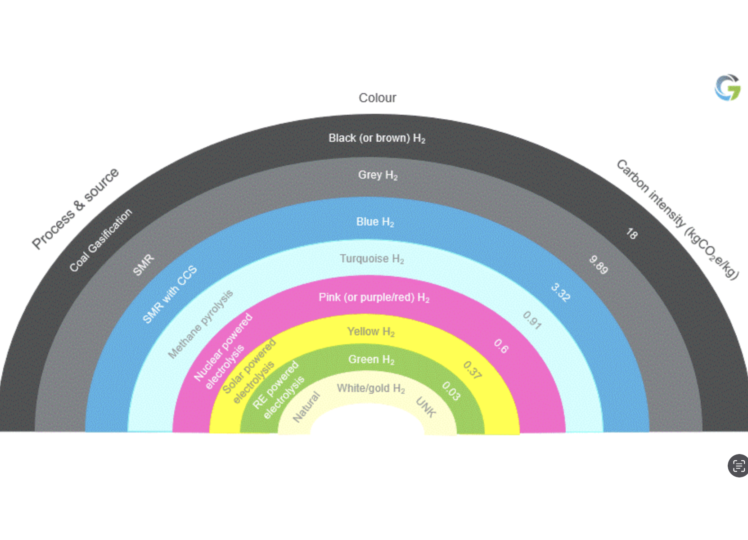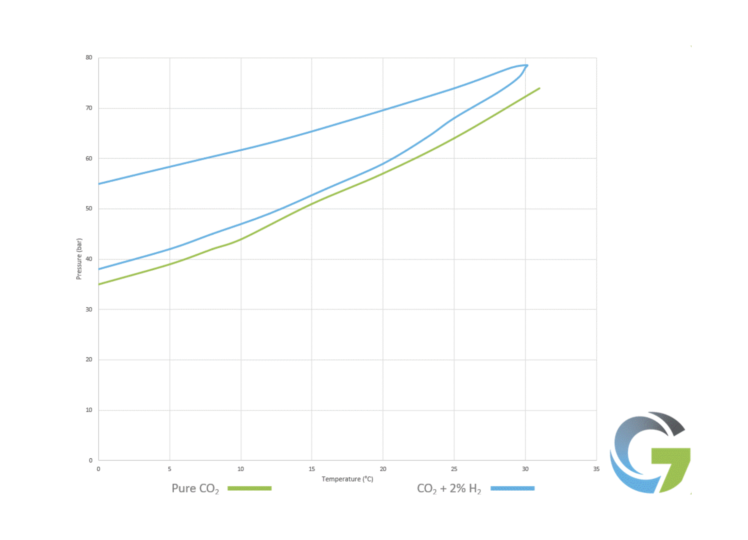Thought Leadership
June 2023
CO2 Shipping
Carbon Capture and Storage is crucial to combating climate change in the near term. One of the biggest challenges in the industry is transporting CO2 from its source to suitable storage sites. CO2 shipping is one such transportation solution being deployed by the industry. Read on to find out more from Finlay MacMillan......
To transport CO2, which is normally gaseous at atmospheric conditions, it is liquefied to achieve higher shipping density. Different pressures and temperatures are used to liquify CO2 and these are categorised as 'low-pressure,' 'medium-pressure,' and 'high-pressure', as shown on the phase diagram.
Generally:
- low-pressure (LP) is around 7 bar and -50°C
- medium-pressure (MP) is around 15 bar and -28°C
- high-pressure (HP) is around 40 bar and 5°C
There are advantages and disadvantages associated with the different conditions and stakeholders across the CO2 value chain are exploring all options.
Shipping of CO2 occurs in two broad categories; port-to-port and direct to store.
- Port-to-port shipping, CO2 is transported from one onshore location to another, where a pipeline will likely connect to the storage site
- Direct to store collects the CO2 from an onshore facility and ships it to the geological storage facility. The CO2 can either be pumped (and heated if required) to injection conditions on the ship, or it is offloaded via an injection facility such as a floating injection unit (FIU) where the required conditioning takes place to achieve injection conditions
Shipping CO2 can offer several advantages over pipeline transport depending on the specific value chain being examined. The benefits include:
- Scalability: Shipping enables the transportation of significant CO2 volumes over various distances. As emission volumes increase with more carbon capture projects, additional vessels can be added in a phased manner avoiding the need for upfront investments in pipelines with throughput limitations
- Flexibility: CO2 shipping enables the collection of CO2 from an expanded pool of emitters. It offers the flexibility to transport CO2 to different storage sites or onshore terminals, diversifying the risk
- Economics: Depending on the value chain, CO2 shipping has proven to be an economically competitive method of transportation
Each value chain has differing requirements, therefore a comprehensive study is essential. Considering factors like emitter locations, CO2 quantities, existing infrastructure, and storage options can help identify the optimal solution.
Why not get in touch with us to discuss how we can help with the CO2 value chain.




